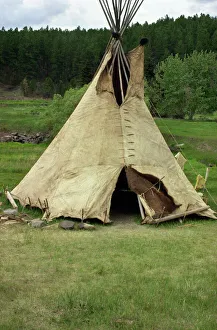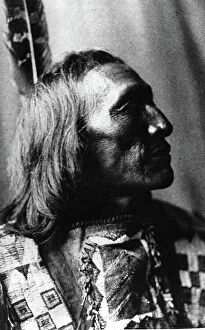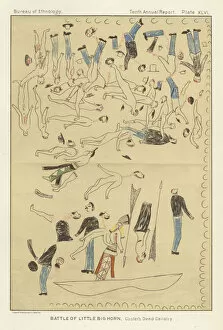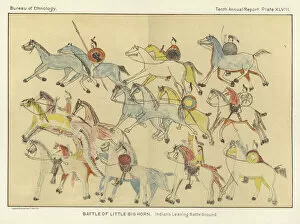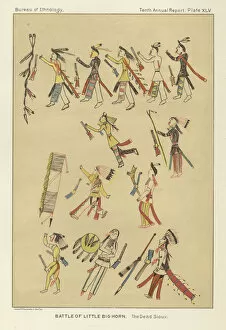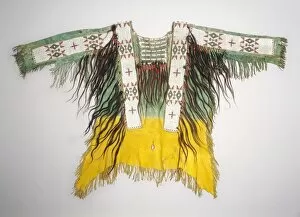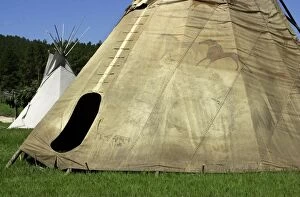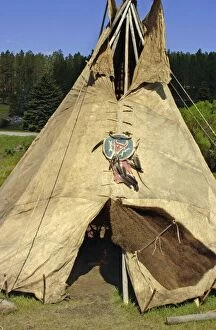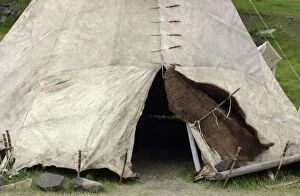Lakota Sioux Collection
The Lakota Sioux, a proud and resilient Native American tribe, have left an indelible mark on history
For sale as Licensed Images
Choose your image, Select your licence and Download the media
The Lakota Sioux, a proud and resilient Native American tribe, have left an indelible mark on history. Their way of life is beautifully depicted in the Sioux tepee made of buffalo-hide, showcasing their resourcefulness and connection to nature. In the iconic photograph "Little Dog, Brule, " taken in 1907, we catch a glimpse of the strength and dignity that defines this remarkable people. The Battle of Little Big Horn holds significant importance for the Lakota Sioux. The color lithograph "Custer's Dead Cavalry" vividly portrays the aftermath of this historic clash between General Custer's forces and Native warriors. A map depicting the battlefield offers insight into this pivotal moment in history. Another color lithograph captures Indians leaving the battle ground after their victory at Little Big Horn—a testament to their bravery and determination against all odds. This image serves as a reminder of their resilience in defending their ancestral lands. A mysterious hide shirt from around 1890 showcases intricate craftsmanship by an unknown creator—an artifact that speaks volumes about Lakota culture and artistry. It represents both protection and identity within a rapidly changing world. Inside a Sioux tipi lies another glimpse into daily life—comfortable yet practical living spaces where families gathered to share stories, traditions, and meals. These tepees were not only shelters but also symbols of community unity. The Lakota Sioux continue to honor their heritage today through cultural preservation efforts while adapting to modern times. Their rich legacy lives on through these images—reminders of their strength, spirit, and unwavering connection with nature that has shaped them for generations.

